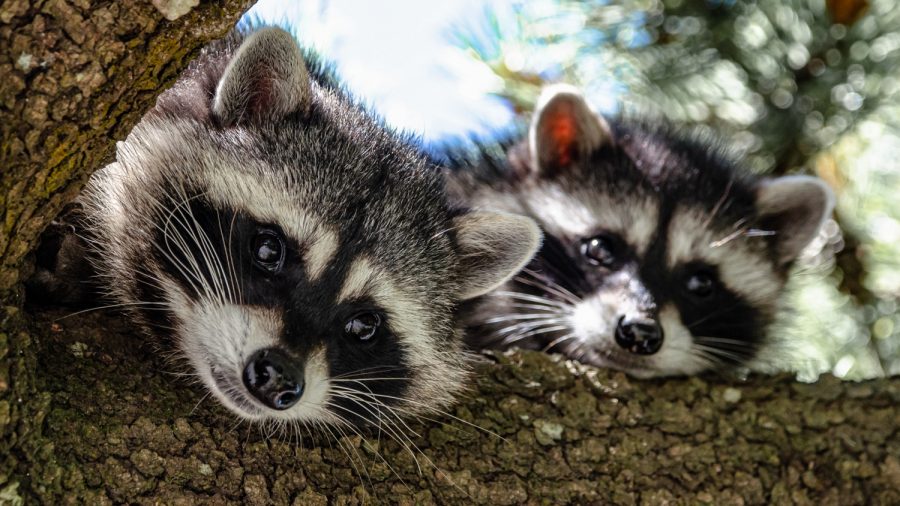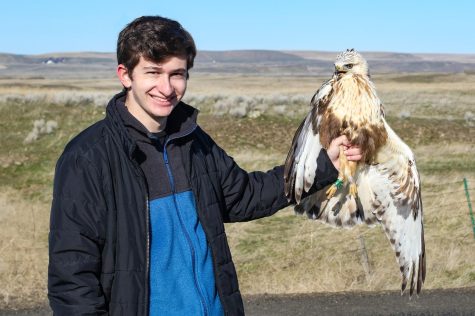Wildlife of the Week: Common Raccoon
From Marvel characters to popular gifs, these furry creatures have become pop culture icons
A mother raccoon and her young peer down from a tree July 20, 2019, in Cannon Beach, Ore.
July 21, 2022
The common raccoon is an animal familiar to many around the world. The species has become a component of global pop culture, from representing a Marvel superhero to rubbing its paws in a popular gif, these “trash pandas,” as the internet has dubbed them, are native to North America and can be found throughout the continent, according to PBS.
Originally, the common raccoon evolved in the tropics of Central America alongside its “cousins,” the coatis, which we wrote about in April.
Specialized in digging through dirt and leaf piles for rotting fruit, meat scraps, and anything else they could eat, it was no surprise the species was able to work its way north to what is now the U.S., according to Utah State University.
These furry little mammals were limited in their spread by the presence of natural bodies of water but were able to spread rapidly in recent centuries by taking advantage of human settlements, according to Utah State University.
Aside from drinking from swimming pools and eating from dumpsters, raccoons have another unique feature that allows them to thrive amongst humans, they have the ability to collapse their spines. Raccoons can almost completely flatten their spines when they need to, allowing them to squeeze into any space they can fit their skull into, according to PBS.
This means that during the day raccoons can easily sneak into sheds, sewers and even into some homes in order to avoid being seen. Then at night, they can reemerge to eat whatever food they can find. In Pullman, you can often see raccoons scurrying across the roads in the early mornings after exiting their hiding places in search of breakfast.









